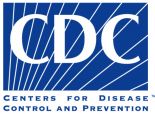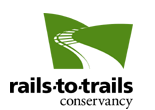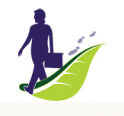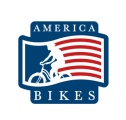Bicycle and pedestrian advocates often need data on the public health and safety benefits of biking and walking. This folder contains studies and reports touting the benefits of bicycling and walking for the broader community as well as design guides and case studies for bicycling and walking infrastructure and polling data showing support for bike-ped projects.
Table of Contents
Public Health
Active Design Guidelines: Promoting Physical Activity and Health Through Design This 2010 report from the New York City Department of Design and Construction provides information about opportunities to increase daily physical activity over a broad range of urban and architectural projects. It includes extensive information about bicycling and walking infrastructure and accommodations.
This 2010 report from the New York City Department of Design and Construction provides information about opportunities to increase daily physical activity over a broad range of urban and architectural projects. It includes extensive information about bicycling and walking infrastructure and accommodations.
Active Design Guidelines: Promoting Physical Activity and Health Through Design (PDF)
Active Travel in Germany and the U.S. (Rutgers)
Contributions of Daily Walking and Cycling to Physical Activity. Travel surveys in Europe and the U.S. show large differences in the proportion of walking and cycling trips without considering implications for physical activity. Conclusions show that daily walking and cycling can help a large proportion of the population meet recommended physical activity levels.
Active Travel Study (PDF)
Community-Wide Obesity Prevention (TrailNet) Trailnet partnered with three local communities (City of De Soto, City of Ferguson, and Old North St. Louis) to develop innovative and broad-based initiatives to combat the obesity epidemic. Additional collaborations with researchers at Washington University and the University of North Carolina evaluated the impact of this work and culminated in the publication of this peer-reviewed journal article, released in June 2011.
Trailnet partnered with three local communities (City of De Soto, City of Ferguson, and Old North St. Louis) to develop innovative and broad-based initiatives to combat the obesity epidemic. Additional collaborations with researchers at Washington University and the University of North Carolina evaluated the impact of this work and culminated in the publication of this peer-reviewed journal article, released in June 2011.
Community-Wide Obesity Prevention (URL)
Connecting Parks, Health, & Pedestrian Safety (Transportation Alternatives) This 2009 report from Transportation Alternatives (TA), entitled "Connecting Parks, Health, and Pedestrian Safety: Improving Pedestrian and Cyclist Access to Harlem River Park," presents proposed improvements for pedestrian and cyclist access to Harlem River Park.
This 2009 report from Transportation Alternatives (TA), entitled "Connecting Parks, Health, and Pedestrian Safety: Improving Pedestrian and Cyclist Access to Harlem River Park," presents proposed improvements for pedestrian and cyclist access to Harlem River Park.
Connecting Parks, Health, & Pedestrian Safety (PDF)(3.4 MB)
Creating Healthy Communities Through Design (DDC) This June 2011 webinar introduced the concept of active design and explored how communities across the country are encouraging walking, bicycling, stair climbing, and active recreation. Designing communities to encourage greater physical activity is a way to counteract the most pressing health, environmental, and economic challenges of our time, from the epidemics of obesity and chronic diseases like diabetes, to oil consumption and pollution from vehicle use, to spending on healthcare costs.
This June 2011 webinar introduced the concept of active design and explored how communities across the country are encouraging walking, bicycling, stair climbing, and active recreation. Designing communities to encourage greater physical activity is a way to counteract the most pressing health, environmental, and economic challenges of our time, from the epidemics of obesity and chronic diseases like diabetes, to oil consumption and pollution from vehicle use, to spending on healthcare costs.
Creating Healthy Communities Through Design Webinar (URL)
Creating Healthy Communities Through Design Presentation (PDF)
Dangerous By Design: Solving the Epidemic of Preventable Pedestrian Deaths This report is a joint effort of the Surface Transportation Policy Partnership and Transportation for America. It builds on the research and analysis of a number of national organizations and policy experts who are working at the intersection of transportation, public health and safety, social equity, and the environment. A special focus is placed on pedestrian fatalities and how to actively prevent them. 84 pages.
This report is a joint effort of the Surface Transportation Policy Partnership and Transportation for America. It builds on the research and analysis of a number of national organizations and policy experts who are working at the intersection of transportation, public health and safety, social equity, and the environment. A special focus is placed on pedestrian fatalities and how to actively prevent them. 84 pages.
Dangerous By Design: Solving the Epidemic of Preventable Pedestrian Deaths (PDF)(3.1MB)
Demonstrating the Benefits of Green Streets for the Active Aging (EPA) This 2010 report demonstrates how "green" streets may contribute to the well-being of a community, including the physical and mental health of older and younger adults, along with the environment and economy.
This 2010 report demonstrates how "green" streets may contribute to the well-being of a community, including the physical and mental health of older and younger adults, along with the environment and economy.
Demonstrating the Benefits of Green Streets for the Active Aging (PDF)(3MB)
Designing for Active Living Among Children (Active Living Research) This 2007 research summary from Active Living Research provides insight into the environmental factors and policies related to young people's physical activity and sedentary behavior patterns, and how these in turn may be linked to obesity. It identifies potential strategies for addressing physical inactivity among youth.
This 2007 research summary from Active Living Research provides insight into the environmental factors and policies related to young people's physical activity and sedentary behavior patterns, and how these in turn may be linked to obesity. It identifies potential strategies for addressing physical inactivity among youth.
Designing for Active Living Among Children (PDF)
Do The Health Benefits Of Cycling Outweigh The Risks? (Utrecht University) This 2010 research paper, authored by Dutch researcher Jeroen de Hartog and published in Environmental Health Perspectives, quantifies the risks and benefits of bicycling and concludes that bicycling is substantially healthier and leads to "about nine times more gains in life years than the losses in life years due to increased inhaled air pollution doses and traffic accidents."
This 2010 research paper, authored by Dutch researcher Jeroen de Hartog and published in Environmental Health Perspectives, quantifies the risks and benefits of bicycling and concludes that bicycling is substantially healthier and leads to "about nine times more gains in life years than the losses in life years due to increased inhaled air pollution doses and traffic accidents."
Do The Health Benefits Of Cycling Outweigh The Risks? (PDF) (225KB)
Getting Involved with Transportation Planning (Public Health Law & Policy) This 2011 fact sheet, created by Public Health Law & Policy in collaboration with TransForm, discusses the important link between transportation planning and health, describes the key players and processes of local and regional transportation planning, and suggests ways to advocate effectively for healthier transportation policies.
This 2011 fact sheet, created by Public Health Law & Policy in collaboration with TransForm, discusses the important link between transportation planning and health, describes the key players and processes of local and regional transportation planning, and suggests ways to advocate effectively for healthier transportation policies.
Getting Involved with Transportation Planning: An Overview for Public Health Advocates (PDF)
Health Benefits of Active Transportation in New York City (NY Dept of Health) May 19, 2011. Released by the New York Department of Health, the "Health Benefits of Active Transportation in New York City" report covers the personal health benefits of active transportation and calls attention to the importance of public transportation in New York City. (PDF)(29KB)(561KB)
May 19, 2011. Released by the New York Department of Health, the "Health Benefits of Active Transportation in New York City" report covers the personal health benefits of active transportation and calls attention to the importance of public transportation in New York City. (PDF)(29KB)(561KB)
Report Press Release
Health Benefits of Active Transportation in New York City report
Health Benefits of Cycling: A Systematic Review (Scandinavian Journal of Med & Science in Sports) This December 2010 study gives a systematic review of published scientific literature on the health effects of cycling and identified 16 studies reporting cycling-specific results. Overall, studies were consistent in showing: a positive relationships between cycling and health; functional benefits in young children; improvements in cardiorespiratory fitness and disease risk factors; and significant risk reduction for all-cause and cancer mortality and for cardiovascular, cancer and obesity morbidity in middle-aged and elderly men and women. (PDF)(201KB)
This December 2010 study gives a systematic review of published scientific literature on the health effects of cycling and identified 16 studies reporting cycling-specific results. Overall, studies were consistent in showing: a positive relationships between cycling and health; functional benefits in young children; improvements in cardiorespiratory fitness and disease risk factors; and significant risk reduction for all-cause and cancer mortality and for cardiovascular, cancer and obesity morbidity in middle-aged and elderly men and women. (PDF)(201KB)
Health Benefits of Cycling: A Systematic Review
Park Prescriptions- Profiles and Resources for Good Health from the Great Outdoors This 2010 report, from the Institute at the Golden Gate, describes 12 programs created by medical, public health, and park communities in the United States and one program in the United Kingdom. These innovative programs developed by either healthcare or park professionals aim to increase physical activity to improve health. (PDF)
This 2010 report, from the Institute at the Golden Gate, describes 12 programs created by medical, public health, and park communities in the United States and one program in the United Kingdom. These innovative programs developed by either healthcare or park professionals aim to increase physical activity to improve health. (PDF)
Park Prescriptions- Profiles and Resources for Good Health from the Great Outdoors
Paved With Gold: The Real Value of Good Street Design This report from London's Commission for Architecture & the Built Environment investigates the value of design. These values include direct tangible benefits such as economic value and indirect long-term benefits, including public health and reduced crime.
This report from London's Commission for Architecture & the Built Environment investigates the value of design. These values include direct tangible benefits such as economic value and indirect long-term benefits, including public health and reduced crime.
Paved With Gold: The Real Value of Good Street Design; 35 pages (PDF) (848KB)
Power of Trails for Promoting Physical Activity in Communities (Active Living Research) This 2011 research brief from Active Living Research highlights findings about specific trail characteristics that appear to attract regular users and examines how trails influence physical activity among various populations.
This 2011 research brief from Active Living Research highlights findings about specific trail characteristics that appear to attract regular users and examines how trails influence physical activity among various populations.
Power of Trails for Promoting Physical Activity in Communities (PDF)
Public Support for Street-Scale Urban Design Practices to Increase Physical Activity (CDC) This 2011 survey from the Centers for Disease Control and Prevention found that a majority of American adults favor "street-scale" urban design practices and policies that increase physical activity. A full two-thirds of respondents also said they'd be willing to "take civic action" to support such policies. (PDF) (262KB)
This 2011 survey from the Centers for Disease Control and Prevention found that a majority of American adults favor "street-scale" urban design practices and policies that increase physical activity. A full two-thirds of respondents also said they'd be willing to "take civic action" to support such policies. (PDF) (262KB)
Public Support for Street-Scale Urban Design Practices to Increase Physical Activity
Recommendations for Improving Health through Transportation Policy (CDC) This April 2010 policy brief from the Centers for Disease Control and Prevention recognizes the "growing awareness across communities that transportation systems impact quality of life and health" and outlines "recommendations for bringing public health considerations into transportation issues," including expanding public transit and promoting active transportation.
This April 2010 policy brief from the Centers for Disease Control and Prevention recognizes the "growing awareness across communities that transportation systems impact quality of life and health" and outlines "recommendations for bringing public health considerations into transportation issues," including expanding public transit and promoting active transportation.
CDC Transportation Recommendations (PDF) (78KB)
Recommended Community Strategies and Measurements to Prevent Obesity in the United States This 2009 from the Center for Disease Control presents recommended strategies to prevent obesity, including Complete Streets, traffic safety, bicycling, walking, bicycling infrastructure, walking infrastructure, efficient land use policies, convenient school siting, easy access to public transportation, and mixed-use development. (PDF)(376 KB)
This 2009 from the Center for Disease Control presents recommended strategies to prevent obesity, including Complete Streets, traffic safety, bicycling, walking, bicycling infrastructure, walking infrastructure, efficient land use policies, convenient school siting, easy access to public transportation, and mixed-use development. (PDF)(376 KB)
Recommended Community Strategies and Measurements to Prevent Obesity in the United States
Streets To Live By Report (Transportation Alternatives) This 2008 report from Transportation Alternatives (TA) investigates how livable street design can bring economic, health, and quality-of-life benefits to New York City.
This 2008 report from Transportation Alternatives (TA) investigates how livable street design can bring economic, health, and quality-of-life benefits to New York City.
Streets to Live By Report (PDF) (9.24MB)
Transportation and Health: Policy Interventions for Safer, Healthier People & Communities (SafeTREC) This 2011 report examines the effects of transportation policies on public health in three key areas—environment and environmental public health, community design and active transportation and motor vehicle-related injuries and fatalities. The analyses show that many of the policies in this document can have immediate, mid-term or long-term effects. Installing streetlights, new sidewalks and bicycle-friendly infrastructure can have positive effects that are felt immediately. Incorporating bicycle boulevards or greenways into comprehensive community plans will likely bring about changes over time.
This 2011 report examines the effects of transportation policies on public health in three key areas—environment and environmental public health, community design and active transportation and motor vehicle-related injuries and fatalities. The analyses show that many of the policies in this document can have immediate, mid-term or long-term effects. Installing streetlights, new sidewalks and bicycle-friendly infrastructure can have positive effects that are felt immediately. Incorporating bicycle boulevards or greenways into comprehensive community plans will likely bring about changes over time.
Transportation and Health: Policy Interventions for Safer, Healthier People & Communities(PDF)(1.4MB)
Webinar: Getting People Moving Again (Alliance) On February 15, 2011, Alliance CEO Jeffrey Miller presented a webinar for the American Public Health Association's Health Benefits from Active Transportation webinar series. The title of the webinar is Getting People Moving Again: The Public Health Case for Active Transportation.
On February 15, 2011, Alliance CEO Jeffrey Miller presented a webinar for the American Public Health Association's Health Benefits from Active Transportation webinar series. The title of the webinar is Getting People Moving Again: The Public Health Case for Active Transportation.
Getting People Moving Again Presentation (PDF)(2.6MB)
Safety
Communication for Pedestrian Safety (California Department of Public Health) This Workbook demonstrates how quick and skillful communication can inform the media and public when a pedestrian collision occurs, while also providing an opportunity to educate your community about pedestrian safety.
This Workbook demonstrates how quick and skillful communication can inform the media and public when a pedestrian collision occurs, while also providing an opportunity to educate your community about pedestrian safety.
Communication for Pedestrian Safety (PDF)
 This study, sponsored by the Southwest University Transportation Center and published in 2011, concludes that traffic crashes are not a product of random driver error but rather more strongly correlated to the built environment itself. "This study finds that the factors associated with a vehicle crashing into a pedestrian and cyclist are largely the same as those resulting in a crash with another vehicle," the authors' note. "Designs that balance the inherent tension between vehicle speeds and traffic conflicts can be used to enhance the safety of pedestrians, cyclists, and motorists alike."
This study, sponsored by the Southwest University Transportation Center and published in 2011, concludes that traffic crashes are not a product of random driver error but rather more strongly correlated to the built environment itself. "This study finds that the factors associated with a vehicle crashing into a pedestrian and cyclist are largely the same as those resulting in a crash with another vehicle," the authors' note. "Designs that balance the inherent tension between vehicle speeds and traffic conflicts can be used to enhance the safety of pedestrians, cyclists, and motorists alike."Designing for the Safety of Pedestrians, Cyclists, and Motorists in Urban Environments (PDF)
 This 2009 report from Transportation Alternatives (TA) is about dangerous NYC drivers, based on the testimony of more than 30 experts in traffic, engineering, law enforcement, safety and public health, and brings together 20 of their recommendations to solve the problem.
This 2009 report from Transportation Alternatives (TA) is about dangerous NYC drivers, based on the testimony of more than 30 experts in traffic, engineering, law enforcement, safety and public health, and brings together 20 of their recommendations to solve the problem.Executive Order: A Mayoral Strategy for Traffic Safety (TA) (PDF)(1.3 MB)
This 2007 paper is by John Pucher and Ralph Buehler of the Bloustein School of Planning and Public Policy at Rutgers University. Pucher and Buehler investigate how bicycling can be made a safe, convenient, and practical way to get around cities. The policies and programs needed to generate high overall levels of cycling are the same policies and programs that encourage a wide spectrum of social groups to cycle: extensive systems of separate cycling facilities, intersection modifications and priority bicycle traffic signals, traffic calming of neighborhoods, safe and convenient bike parking, coordination and integration of cycling with public transport, traffic education and training for both cyclists and motorists, and traffic laws that favor cyclists and pedestrians. This paper examines successful policies in the Netherlands, Denmark, and Germany, which have achieved impressive levels of cycling among almost all social groups. For comparison, the paper portrays the marginal status of cycling in the UK and USA, where only about one percent of trips are by bike.
Making Cycling Irresistible: Lessons from the Netherlands, Denmark, and Germany. (PDF) (769KB)
 Safety is the number one priority for the U.S. Department of Transportation (USDOT) and it's the agency's policy to provide safe and effective pedestrian accommodation wherever possible. The Federal Highway Administration (FHWA) encourages the use of specific proven pedestrian safety countermeasures that can help achieve local, State and National safety goals. This 2011 report highlights State departments of transportation that have developed policies related to these countermeasures.
Safety is the number one priority for the U.S. Department of Transportation (USDOT) and it's the agency's policy to provide safe and effective pedestrian accommodation wherever possible. The Federal Highway Administration (FHWA) encourages the use of specific proven pedestrian safety countermeasures that can help achieve local, State and National safety goals. This 2011 report highlights State departments of transportation that have developed policies related to these countermeasures.Pedestrian Countermeasure Policy Best Practice Report (PDF)(400KB)
 From the American Journal of Public Health. This article compares unsafe and inconvenient walking and biking practices in the United States with successful biking and walking practices in the Netherlands and Germany in order to create proposals for safe transit in America. 8 pages.
From the American Journal of Public Health. This article compares unsafe and inconvenient walking and biking practices in the United States with successful biking and walking practices in the Netherlands and Germany in order to create proposals for safe transit in America. 8 pages.Promoting Safe Walking & Cycling to Improve Public Health: Lessons from the Netherlands and Germany (PDF) (166KB)
Safety in Numbers: More Walkers and Bicyclists, Safer Walking and Bicycling
This 2003 Injury Prevention article by P. L. Jacobsen examines the relationship between the number of people bicycling and walking and the frequency of collisions between motorists and bicyclists or pedestrians. The findings indicate that safety improves along with rates of bicycling and walking; 5 pages.
Safety in Numbers: More Walkers and Bicyclists, Safer Walking and Bicycling (PDF) (139KB)
 February 2009 report posted on Transportation Alternatives website. According to the report, "In this study Transportation Alternatives (T.A.) identifies dangerous intersections, streets and walking zones of particular use to seniors, and aims to transform them into places that are safe and enjoyable for seniors." 50 pages.
February 2009 report posted on Transportation Alternatives website. According to the report, "In this study Transportation Alternatives (T.A.) identifies dangerous intersections, streets and walking zones of particular use to seniors, and aims to transform them into places that are safe and enjoyable for seniors." 50 pages.Walk the Walk (PDF) (1.5 MB)
 Vision Zero represents a shift in the perception that traffic fatalities are accidents over which we have no control. Through awareness campaigns, targeted enforcement and infrastructure changes, traffic fatalities are tragedies that can — and must — be eliminated. On our April 25 Mutual Aid conference call, panelists Rob Sadowsky, Mark Lear and Lindsey Ganson discussed the impact of Vision Zero campaigns in their cities and shared lessons learned.
Vision Zero represents a shift in the perception that traffic fatalities are accidents over which we have no control. Through awareness campaigns, targeted enforcement and infrastructure changes, traffic fatalities are tragedies that can — and must — be eliminated. On our April 25 Mutual Aid conference call, panelists Rob Sadowsky, Mark Lear and Lindsey Ganson discussed the impact of Vision Zero campaigns in their cities and shared lessons learned.Vision Zero Campaigns Tip Sheet (PDF)
Call recording (MP3)
Vision Zero: How Safer Streets in NYC Can Save Over 100 Lives a Year (Transportation Alternatives)
 This June 2011 report from Transportation Alternatives and the Drum Major Institute illustrates the critical need to improve street safety in New York city, citing the cost in human terms; presents data and evidence from the research literature that confirms the life-saving benefits of the city's recent transportation policies; and offers constructive advice about how New York City can build consensus and momentum in order to prevent road fatalities and serious injuries.
This June 2011 report from Transportation Alternatives and the Drum Major Institute illustrates the critical need to improve street safety in New York city, citing the cost in human terms; presents data and evidence from the research literature that confirms the life-saving benefits of the city's recent transportation policies; and offers constructive advice about how New York City can build consensus and momentum in order to prevent road fatalities and serious injuries.Vision Zero report (PDF)
Why Bike-Friendly Cities Are Safer for All Road Users (Marshall, Garrick)
Published in Environmental Practice by Wesley E. Marshall and Norman W. Garrick in March 2011, this paper compares California communities by the presence or absence of bicycle-friendly streets, and finds that those with more bike infrastructure have lower fatality rates for all users.
Why Bike-Friendly Cities Are Safer for All Road Users (PDF)(561KB)
Design Guides and Case Studies
Benefits of Rail Trails (RTC) Rails to Trails Conservancy's Benefits of Rail Trails include Health, Transportation/Livability, Conservation/Environment, Economy/Revitalization, and Historic Preservation/Community Identity.
Rails to Trails Conservancy's Benefits of Rail Trails include Health, Transportation/Livability, Conservation/Environment, Economy/Revitalization, and Historic Preservation/Community Identity.
Benefits of Rail Trails (URL)
Case Study Compendium (Pedestrian and Bicycle Information Center) This report, published by the Pedestrian and Bicycle Information Center, contains case studies examining pedestrian and bicycle projects and programs across the United States and abroad. Each case study includes a one to three page evaluation of the problem, background, solution, and results.
This report, published by the Pedestrian and Bicycle Information Center, contains case studies examining pedestrian and bicycle projects and programs across the United States and abroad. Each case study includes a one to three page evaluation of the problem, background, solution, and results.
Case Study Compendium (PDF) (4MB)
Cool Pedestrian Environments A web-based resource from Fehr & Peers that provides pedestrian planning, design and safety documents, as well as covering topics like ADA accommodations, grant writing and complete streets. (URL)
A web-based resource from Fehr & Peers that provides pedestrian planning, design and safety documents, as well as covering topics like ADA accommodations, grant writing and complete streets. (URL)
Cool Pedestrian Environments
Designing Walkable Urban Thoroughfares: A Context Sensitive Approach This 2006 publication from the Institute of Transportation Engineers and the Congress for New Urbanism includes discussion of context-oriented design for more walkable urban roadways and specific information on pedestrian and bicycle facility design.
This 2006 publication from the Institute of Transportation Engineers and the Congress for New Urbanism includes discussion of context-oriented design for more walkable urban roadways and specific information on pedestrian and bicycle facility design.
Designing Walkable Urban Thoroughfares: A Context Sensitive Approach (PDF)
Polls and Public Opinion
2011 Community Preference Survey (National Association of Realtors)
This survey, released in April 2011, from the National Association of Realtors shows that "Americans favor walkable, mixed-use neighborhoods, with 56 percent of respondents preferring smart growth neighborhoods over neighborhoods that require more driving between home, work and recreation."
Smart Growth Community Survey 2011 (PDF)
Like Commuting?: Workers' Perceptions of their Daily Commute (Statistics Canada) Statistics Canada (the Canadian equivalent of the US Census Bureau) provides, in this 2006 resource, real data and analysis spreading the word that bicycling is the most satisfying way to commute.
Statistics Canada (the Canadian equivalent of the US Census Bureau) provides, in this 2006 resource, real data and analysis spreading the word that bicycling is the most satisfying way to commute.
Like Commuting?: Workers' Perceptions of their Daily Commute (PDF)(98KB)
National Poll: Americans Support Funding for Sidewalks and Bikeways (America Bikes) June 13 2012. A 2012 Princeton Survey reveals overwhelming support for biking and walking, with more than 80 percent of Americans favoring level or increased federal funding for sidewalks and bike lanes. America Bikes produced a four-page report summary and a full white paper on the survey results.
June 13 2012. A 2012 Princeton Survey reveals overwhelming support for biking and walking, with more than 80 percent of Americans favoring level or increased federal funding for sidewalks and bike lanes. America Bikes produced a four-page report summary and a full white paper on the survey results.
America Bikes National Poll 4 pager finalf (PDF)
America Bikes National Poll white paper (PDF)
What Would Get Americans Biking to Work? Tom Vanderbilt explores the simple concept of providing decent bicycle parking in order to revolutionize American cities and the amount of people biking within them.
Tom Vanderbilt explores the simple concept of providing decent bicycle parking in order to revolutionize American cities and the amount of people biking within them.
What Would Get Americans Biking to Work? (URL)

